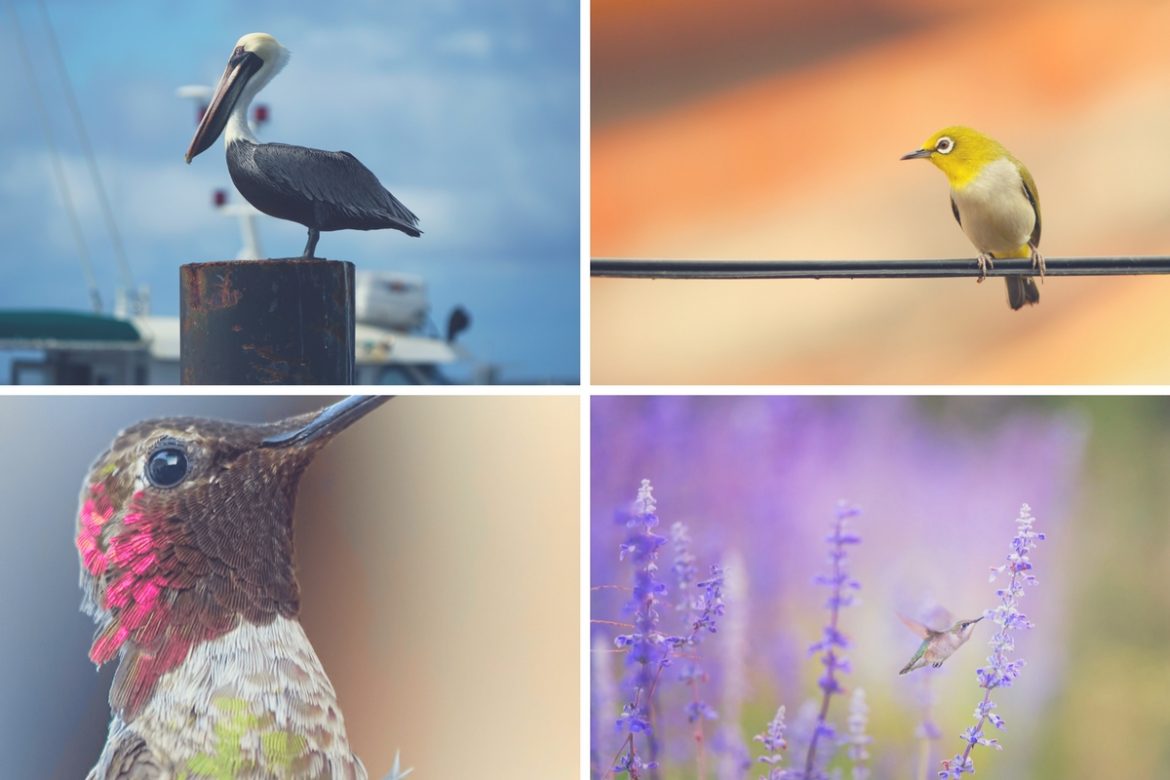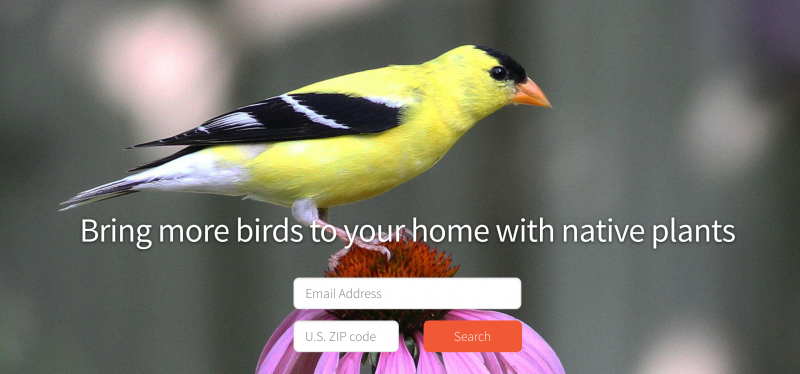With spring arriving earlier than usual and bird migration currently underway, the National Audubon Society invites nature enthusiasts to grow bird-friendly native plants at home. Through Audubon’s one-of-a-kind Plants for Birds public online database, anyone nationwide can access a list of native plants that benefit their favorite local bird species, by just typing in their zip code.
“Did you know that 96 percent of land birds feed insects and spiders to their chicks? A single nest of chickadee babies may scarf down as many as 9,000 caterpillars before they fledge. Native tree species are better for birds because they host many more caterpillars; native oaks support more than 550 kinds of butterflies and moths. Non-native Ginkgo trees? Only five.” said Tod Winston, Plants for Birds program associate at Audubon.
Landscaping For Birds
Gardens are outdoor sanctuaries for birds, insects and other wildlife. Every spring, migrating birds visit our yards looking for nourishment from our gardens and places to raise their chicks. By adding native plants to one’s yard, balcony, container garden, rooftop or public space, anyone, anywhere can not only attract more birds but give them the best chance of survival in the face of climate change and urban development.
Most landscaping plants available in nurseries are exotic species from other countries. Many are prized for qualities that make them poor food sources for wildlife. They generally also require more chemicals and water to thrive, increasing maintenance time, costs and environmental hazards. Some can even become invasive.
“Birds and native plants are made for each other thanks to millions of years of evolution,” says Dr. John Rowden, Audubon’s director of community conservation. “As plants grow and bloom earlier because of warming temperatures, there is a growing mismatch between bloom times and the arrival of birds that depend on them. Habitat provided by native plants can help climate threatened birds adapt and survive.”
By growing native plants, you can help protect birds while turning your home into a private wildlife paradise. Keep common birds common with these native plants this spring:
Cardinals, Grosbeaks, and Tanagers
Birds: Northern Cardinal, Black-headed Grosbeak, Blue Grosbeak, Rose-breasted Grosbeak, Scarlet Tanager, Western Tanager
Attract Them With: Sunflowers (Helianthus spp.), elderberries (Sambucus spp.), and serviceberries (Amelanchier spp.)
Chickadees and Titmice
Birds: Black-capped Chickadee, Carolina Chickadee, Mountain Chickadee, Juniper Titmouse, Oak Titmouse, Tufted Titmouse
Attract Them With: Birches (Betula spp.) and sumacs (Rhus spp.)
Finches
Birds: American Goldfinch, Cassin’s Finch, House Finch, Lesser Goldfinch, Pine Siskin, Purple Finch
Attract Them With: Composite flowers (Asteraceae family), spruces (Abies spp.), hemlocks (Tsuga spp.), and pines (Pinus spp.)
Hummingbirds
Birds: Anna’s Hummingbird, Black-chinned Hummingbird, Broad-tailed Hummingbird, Costa’s Hummingbird, Ruby-throated Hummingbird, Rufous Hummingbird,
Attract Them With: Honeysuckle vines (Lonicera spp.), penstemons (Pentemon spp.), milkweeds (Asclepias spp.)), and sages (Salvia spp.)
Sparrows
Birds: American Tree Sparrow, Chipping Sparrow, Dark-eyed Junco, Song Sparrow, White-crowned Sparrow, White-throated Sparrow
Attract Them With: Blackberries (Rubus spp.) and wild grasses (Andropogon, Bouteloua, Panicum, and Sorghastrum spp.)
Warblers and Vireos
Birds: Blackburnian Warbler, Black-throated Blue Warbler, Wilson’s Warbler, Yellow Warbler, Warbling Vireo, Yellow-throated Vireo
Attract Them With: Oaks (Quercus spp.) and beeches (Fagus spp.)
Woodpeckers
Birds: Downy Woodpecker, Hairy Woodpecker, Ladder-backed Woodpecker, Northern Flicker, Red-bellied Woodpecker, White-headed Woodpecker,
Attract Them With: Pines (Pinus spp.), hickories (Carya spp.), oaks (Quercus spp.), and cherries (Prunus sp.
If you plant it, the birds will come. Local Audubon centers and chapters, native plant nurseries, and retailers are listed on Audubon’snative plants database for anyone seeking more information and where to obtain the right plants. For extra bird-friendly home tips, gardening DIY’s, and more, visit audubon.org/plantsforbirds
What’s that bird outside your window? Download Audubon’s free app today and get an award-winning field guide at your fingertips,audubon.org/apps


